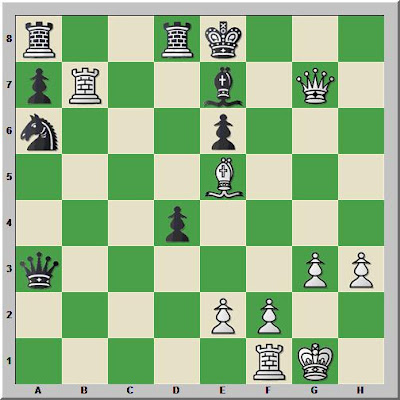 |
| New Peak Rating |
No more waffling will be permitted. I aim to become a USCF Expert. I had set the
modest goal of pushing through the next rating level, 1900, and wrote my
New Year's Resolutions to achieve that aim. My first tournament of 2012 was an astounding, and wholly unexpected success! I wanted to score 3.5 or better, believing that would propel me over 1900. I won all my games, took my usual third round bye, and finished in second place in the
20th Dave Collyer Memorial. My new rating is 1933! My head is reeling from the thin air.
Ironically, my winning strategy in two games was playing for a draw. I can neither pursue this strategy with plans for success, nor recommend it. Even so, there is something worthwhile in the efforts to become difficult to beat. In "
Rating Estimation," one of the most popular posts on this blog, I mentioned increasing my drawing ratio as part of the path to improvement.
To get to A class, I've needed to learn tactics and endgames, and
expanded my opening repertoire. But, more important, I've needed to
reduce the obvious blunders made in haste, and I've needed to become far
more consistent against lower rated players. I've also increased my
drawing ratio.
"Rating Estimation"
I certainly made errors in my four games this past weekend, but these errors were far less severe than some that had been common. My game against Michael Cambareri in round four is a case in point. Just a bit over a year ago, I played a memorable game against Michael. I was talking with others on the nearby boards about this game before round one began. Michael often plays the opening extremely fast, and I became caught up in matching his speed one Thursday night. In the 2010 Turkey Quads, I instinctively pushed my c-pawn without the necessary preparation.
Cambareri, M (1884) -- Stripes, J (1841)
Turkey Quads, Spokane 2010
1.e4 e6 2.d4 d5 3.Nc3 Nf6 4.Bg5 Be7 5.e5 Nd7 6.Bxe7 Qxe7 7.f4 c5?? 8.Nb5 1-0
It was possible to play on and make my opponent prove his ability to convert the advantage gained from winning the exchange. I opted to go home and watch television with my wife. In previous games, Michael had demonstrated to my satisfaction his ability to convert such an advantage. Spending an hour or two suffering from slow strangulation did not strike me as the way that I wanted to spend the evening.
Black to move
Black must play 7...a6. When I played this move yesterday, Michael laughed. He, too, had clear memories of our previous game in the Classical French. This time, after a long think, Michael played an unusual move. It may have been an error. I was able to temporarily win a pawn, and might have taken two. I had a solid position with no clear weaknesses, but for a time was defending passively due to some positional errors. The opportunities that my opponent missed were far less obvious than his opportunity after my egregious tactical blunder in the Turkey Quads. In the end, under time pressure, he turned down my draw offer and then promptly walked into a mating net.



































